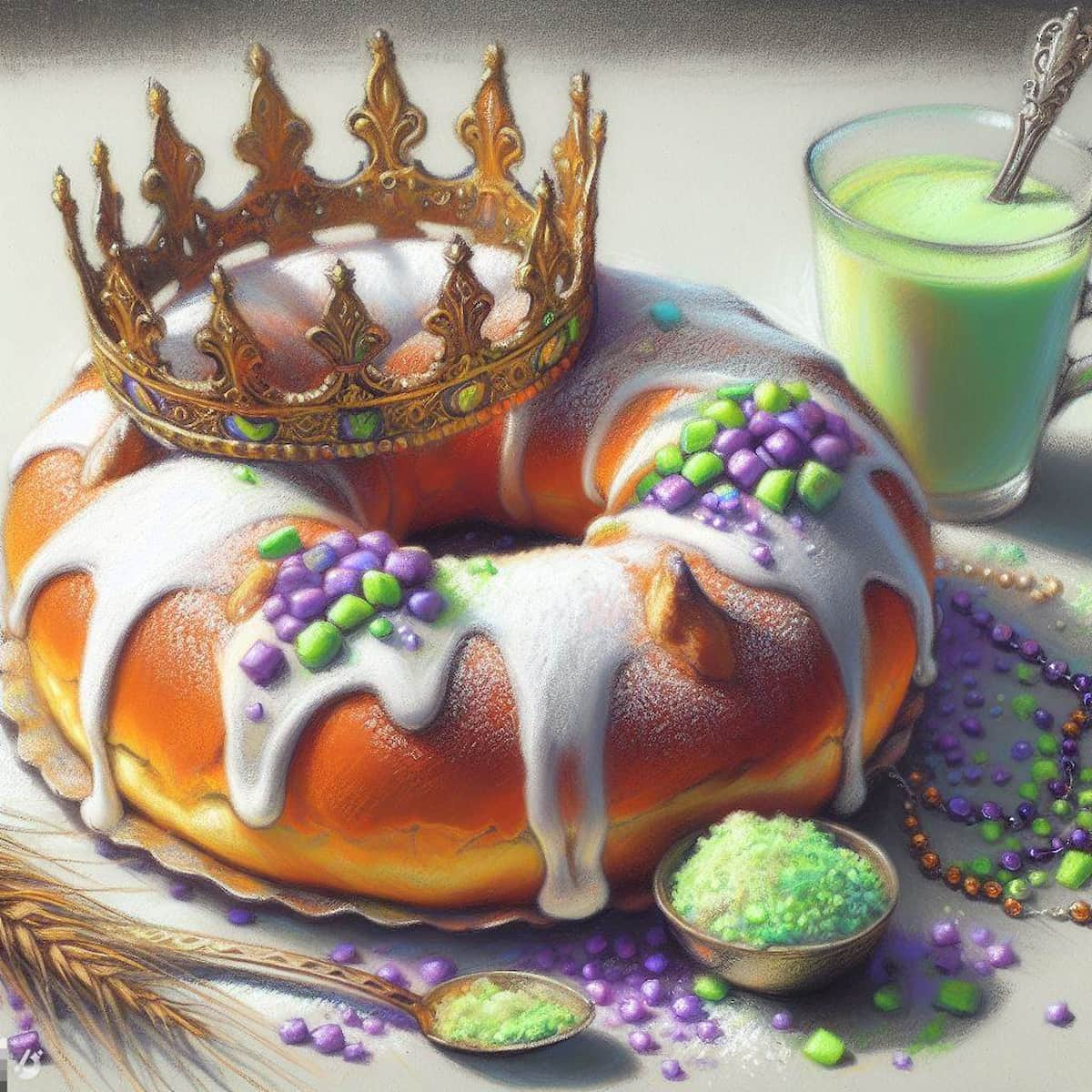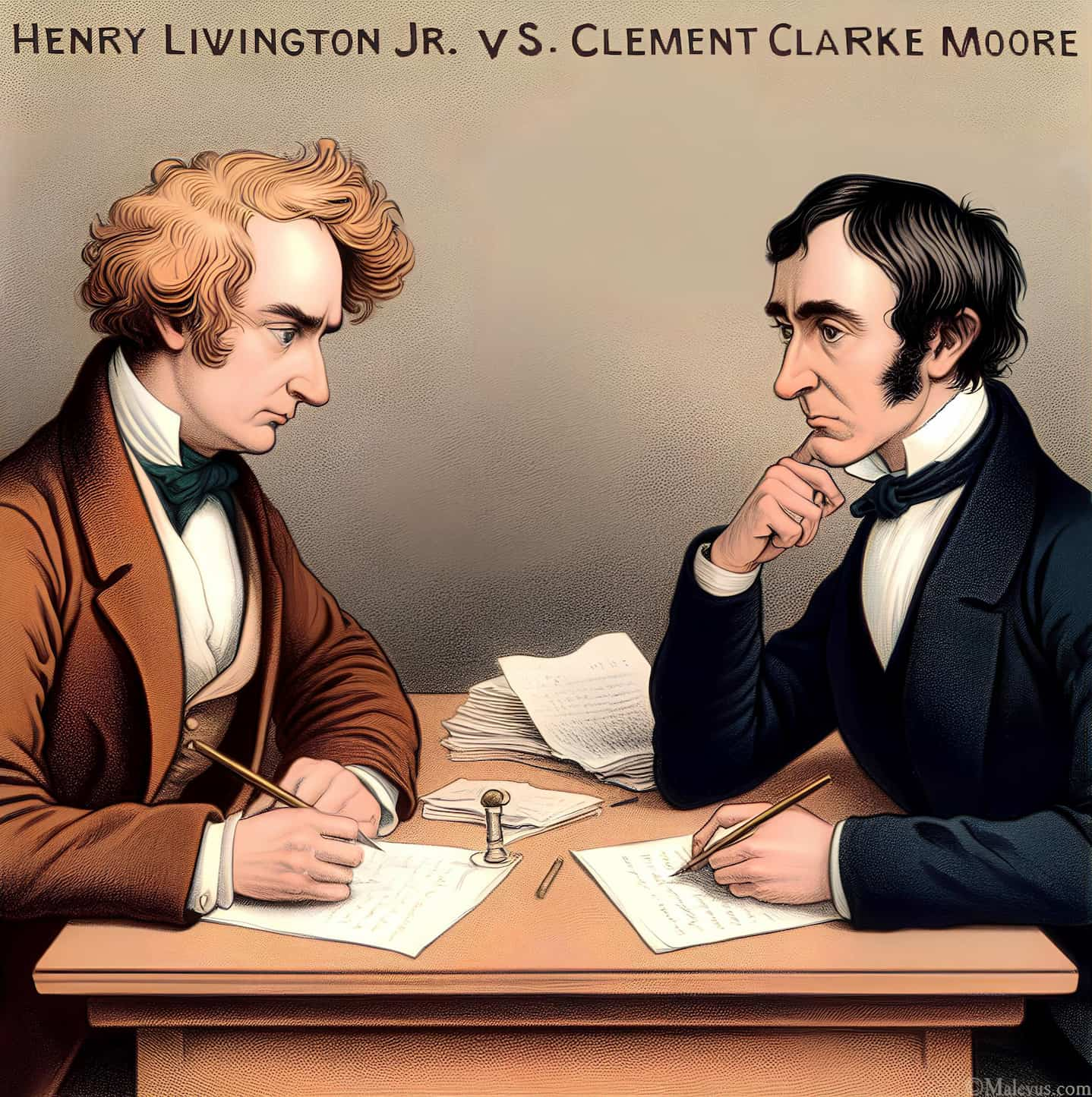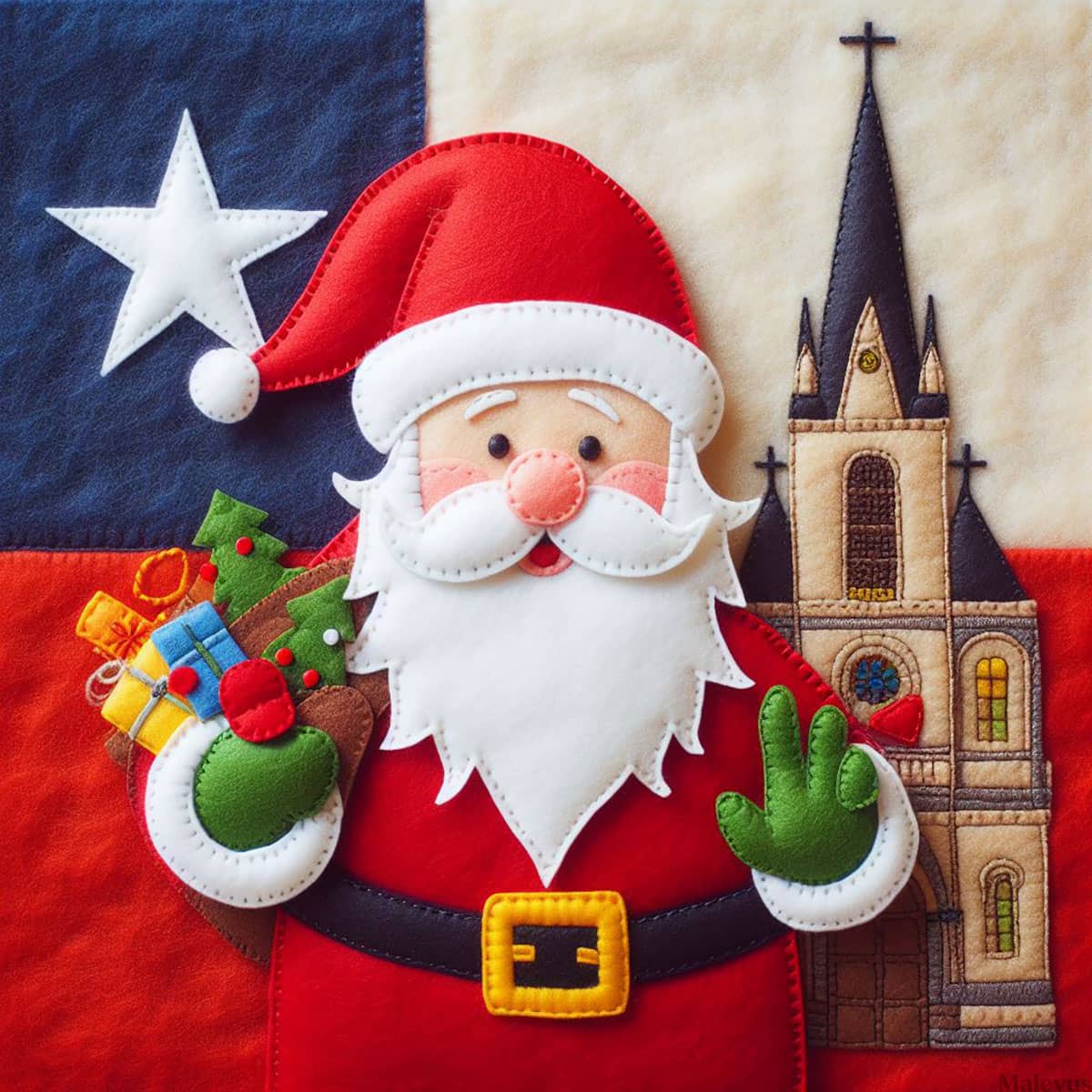Epiphany, often called Three Kings Day, is celebrated in many countries with the traditional confection known as a King Cake. Although its shape and ingredients may vary, a common recipe calls for brioche-like dough, cinnamon flavoring, and a frosted glaze or sugars in green, purple, and gold. Traditionally, it is shaped like a wreath, and these colors stand for authority, conviction, and fairness, in that order. The person whose piece of cake yields a bean or figurine is thought to enjoy good fortune. In certain cultures, it is the person’s duty to throw the following celebration with a King Cake. During the carnival celebration of Mardi Gras, this dessert becomes even more popular.
The King Cake is a traditionally crafted and consumed pastry in a significant part of France, Quebec, Acadia, Switzerland, Luxembourg, Belgium, and Lebanon on the occasion of Epiphany, a Christian celebration that commemorates the visit of the wise men to the infant Jesus. It is celebrated, depending on the country, on the first Sunday after the event. In the southern regions of France, this pastry is also known as the galette parisienne, where, instead of the galette, people consume the king’s cake. The King Cake, which has transcended its religious significance, serves as an opportunity for family or friends to come together.
History of the King Cake
Origin
The Roman historian Tacitus writes that during the festivals dedicated to Saturn, it was customary to draw lots for kingship. The origin of the King Cake lies in the Saturnalia, Roman festivals occurring between the end of December and the beginning of January. During these festivals, the Romans would designate a slave as the “king for a day.” At a banquet within each large familia, a cake’s bean would be used to randomly select the “Saturnalicius princeps” (prince of the Saturnalia or of disorder). The “king for a day” had the power to fulfill all his desires during the day (such as giving orders to his master) before being put to death, or more likely, returning to his servile life.
To ensure the random distribution of cake slices, it is customary for the youngest person to position themselves under the table and name the recipient of the slice, as designated by the person in charge of the service.
Étienne Pasquier describes in his “Recherches de la France” the ceremonies observed on this occasion: “The cake, cut into as many portions as there are guests, has a small child placed under the table. The master questions the child under the name of Phébé (Phoebus or Apollo), as if the child, in the innocence of their age, represented an oracle of Apollo. In response to this questioning, the child replies with the Latin word ‘domine’ (lord, master). Upon this, the master adjures the child to reveal to whom they will give the portion of the cake in their hand. The child names someone that comes to mind, without regard to the dignity of the individuals, until the slice with the bean is given; the person who has it is considered the king of the company, even though they may have less authority.
And, with this done, everyone indulges in drinking, eating, and dancing.”
Medieval Period
The sharing of the galette is linked to the celebration of the Magi Kings during Epiphany for Christians. In the Middle Ages, the nobles sometimes appointed the king of the feast, providing amusement during the meal. The author of The Life of the Duke of Bourbon, aiming to showcase the piety of this prince from the late 14th century, notes that on the day of the Kings (Epiphany), he would crown an eight-year-old child, the poorest one found in the entire city. The child would be adorned in royal attire, and the duke would assign his own officers to serve him. The next day, the child would still dine at the duke’s table, and then the master of the household would go on a quest for the poor king. The Duke of Bourbon usually gave him forty pounds; each knight of the court contributed one franc; and the squires each gave half a franc. The total amount reached nearly a hundred francs, which were given to the father and mother for the education of their child.
As early as 1311, layered cakes were referenced in a charter by Robert de Fouilloy, the Bishop of Amiens. Frequently, feudal dues were even paid with a cake of this kind. Every year in Fontainebleau, on a specified date, the forest officials gather at a location called “la table du roi” (the king’s table).
There, all the officials or vassals who can collect wood in the forest and graze their herds come to pay homage and fulfill their obligations. Newlyweds of the year, residents of certain quarters of the city, and those from an entire parish owe only a cake. Similarly, when the king enters their town, the bourgeois of Amiens are obligated to present him with a cake made from a setier of wheat.
Monarchy
In her memoirs, the writer Françoise de Motteville mentions, in the year 1648, that: ‘This evening, the queen honored us by having a cake brought to Madame de Brégy [Saumaise de Chazan], my sister, and me; we shared it with her. We drank to her health with hypocras that she had brought to us.'” Another passage from the same memoirs attests that, following a custom still observed in some provinces, a portion is reserved for the Virgin, which is then distributed to the poor.
“To amuse the king,” Françoise de Motteville writes, “the queen wanted to separate a cake, and she honored us by inviting us to share it with the king and her. We made her the queen of the beans because the beans had been found in the portion for the Virgin.
She ordered that a bottle of hypocras be brought to us, which we drank in front of her, and we persuaded her to have a little. We wanted to indulge in the extravagant follies of this day, and we shouted, ‘The queen is drinking!
‘”
Before Louis XIV‘s reign, noble ladies who found the bean became queens of France for a day and could request a wish known as “graces and kindness,” but “the Sun King” abolished this custom and preserved the tradition of the king’s cake, even at a time when his court adhered to strict etiquette.
The Mercure de France describes the hall as having five tables: one for princes and lords and four for ladies. “The first table was hosted by the king, the second by the dauphin. The bean was drawn at all five tables. The grand squire became king at the men’s table; at the four women’s tables, the queen was a woman. Then the king and the queen selected ministers, each in their small kingdom, and appointed ambassadors to congratulate neighboring powers and propose alliances and treaties.” Louis XIV accompanied the ambassador delegated by the queen. He spoke on her behalf and, after a gracious compliment to the grand squire, asked for his protection, which he promised, adding that if he did not have a fortune, they deserved to have one made for them.
The delegation then visited the other tables, and delegates from these tables similarly approached Louis XIV’s table. Some of them, both men and women, infused their speeches and alliance proposals with such finesse, wit, apt allusions, and clever jokes that they became true entertainment for the assembly. In short, the king enjoyed it so much that he wanted to repeat it the following week.
This time, he found the bean in the cake at his table, and thus began the congratulatory compliments. A princess, one of his natural daughters known for some indiscretions during that time, sent a request for his protection for any unfortunate events that might occur in her life. “I promise it to her, provided she doesn’t bring them upon herself,” he replied. This response led a courtier to remark that this king did not speak as a ‘king of the bean’.
At the men’s table, a carnival character was created and paraded through the hall while singing a burlesque song.
In 1711, due to famine, the Paris Parliament decided to prohibit the King Cake so that the scarce flour would be exclusively used for making bread. At the beginning of the 18th century, bakers usually sent a king’s cake to their ‘clients’ (using ‘clients’ here in the sense of ‘customers’). Pastry chefs objected to this practice and even sued the bakers, claiming they were encroaching on their rights. In response to their plea, the Parliament issued rulings in 1713 and 1717, prohibiting bakers from making and giving any kind of pastry in the future, using butter and eggs in their dough, and even glazing their bread with eggs. The prohibition only applied to Paris, and the prohibited practice continued to exist in most provinces.






